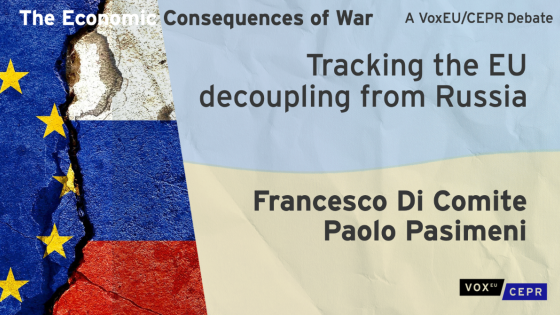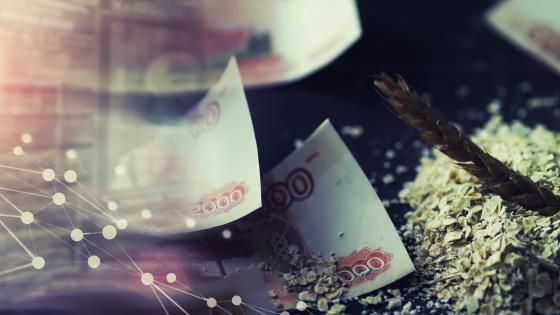Recent protests by farmers across Europe overlooked a significant narrative (Riegert 2024). The protesters opposed increased grain imports from Ukraine, while seemingly ignoring the root cause of their problems: Russia’s unprovoked invasion of Ukraine. Russia’s war is testing the EU economy (Orsini et al. 2022) and is the very reason the EU initially extended trade benefits to Ukraine: to support its war efforts (European Commission 2023) and mitigate food insecurity in Africa (McGuirk and Burke 2022) and Asia (World Food Programme 2023).
Meanwhile, Russia’s strategic manipulation of food supplies (Welsh 2024) – notably its blockade of Ukrainian access to the Black Sea (Berman et al. 2024) – has not only weaponised food but is also driving migration from developing countries and distorts market competition (Paniagua et al. 2022), to the detriment of European farmers. At the same time, Russian grain is a major competitor to EU farmers, more so than Ukraine.
Due to Russia’s discontinuation of data reporting to international databases like the UN Comtrade Database, quantifying Russia’s current grain market activity presents challenges. But insights from alternative sources such as AgFlow, a data intelligence platform specialising in monitoring sea transport of agricultural products, underscore Russia’s significant influence on global grain markets, including the fact that European countries import a substantial share of their grain from Russia.
This naturally suggests the strategic imposition of tariffs on Russian grain exports to the EU, a policy proposed by the European Commission on 22 March 2024 (Directorate-General for Neighbourhood and Enlargement Negotiations 2024) but not yet adopted by the European Council. Such tariffs would not only alleviate the pressure on European farmers but also signal an important shift in Europe’s stance against Russia’s broader geopolitical tactics, acknowledging Russia’s role as both an aggressor that uses foreign funds to finance the war and a manipulator of food security.
We analysed exports of grains (e.g. barley, corn, durum wheat, linseed, millet, oat, rye, sorghum, and triticale) from Russia, Ukraine, and EU countries from January 2023 to March 2024. In the AgFlow database, Russia stands as the largest grain exporter, with a dominant share of 17%. Notably, Russia’s grain exports intersect with those of the EU in over half of the 100 EU destinations recorded in AgFlow’s data.
In major markets that are important to Europe’s agriculture – such as China, Egypt, Spain, and Turkey – Russia exported just as much grain as Ukraine (a little under 30,000 kilotonnes, the equivalent of all Polish grain production in 2023; Central Statistical Office of Poland 2023). When we consider all overlapping destinations, Russia’s exports surpass Ukraine’s by almost 42% or around 20,000 kilotonnes, more than the annual cereals production of any EU country except France, Germany, and Poland (Eurostat 2023). Figure 1 shows nine destinations that are important to both the EU and Russia. Russia dominates the EU in three of these destinations, matches the EU in two, and exports over 25% more to all markets combined than the EU. This data point alone vividly illustrates Russia’s market dominance.
Figure 1 Exports from Russia and the EU to overlapping destinations
Notes: The graph depicts EU and Russia’s exports to 47 of the EU’s grain export destinations that overlap with Russia’s and are not in the EU. Standalone countries depicted had export values of at least 1.5% of the total European grain exports and at least 25% of that value for Russian exports. Countries with lower values were grouped into the ‘Other’ category.
Data source: AgFlow.
An examination of Russia’s competitive dynamics with three of Europe’s largest grain exporters – Poland, and Romania, and France – reveals that Russia is a bigger competitor than Ukraine, competing in more countries and exporting an overall volume 120% greater than Ukraine. Russia outcompetes Poland in about 70% of 20 shared markets, which includes some of Poland’s biggest markets like Spain and Morocco. In almost 60% of these markets, Russia exports at least twice as much as Poland does. At the same time, Russia competes with Romania, particularly in some of its largest destinations like Egypt, Saudi Arabia, and Algeria, where Russia exports four times as much as Romania. Russia also dominates Romania in almost 60% of overlapping middle and small destinations, exporting over 750% more than Romania to them. Similarly, France exports only 35% of Russia’s amount, and France and Russia share 11 more export destinations than France and Ukraine.
Similar patterns hold for other EU nations, including Bulgaria, Latvia, and Lithuania. Given its expansive exporting capacity, Russia consistently dominates in numerous EU destination markets. By inundating these markets with grain (Quinn 2023), Russia effectively drives down grain prices, thereby reducing the appeal of these markets for EU farmers.
Despite the EU sanctions on Russian oil and other commodities
as part of its decoupling from Russia (Di Comite and Pasimeni 2023), agricultural trade remains a significant gap in these measures. According to AgFlow, seven out of ten EU countries analysed get more than 10% of their grain imports from Russia (Figure 2). For instance, Russia contributes 23% to the grain imports of both Greece and Italy, and an overwhelming 71% and 83% to the imports of Latvia and Lithuania, respectively. In the AgFlow database, Russia is the fifth largest grain exporter to the EU.
Figure 2 EU countries’ dependence on Russian grain imports
Notes: Graph depicts the ten largest EU importers of Russian grain, accompanied by the percentage of their grain imports that originated from Russia.
Data source: AgFlow.
The imposition of tariffs on Russian grain would be a natural continuation of the EU’s existing sanctions against Russia and a crucial step towards restoring balance in the European grain market. Russia’s strategic manipulation of food supplies and weaponisation of hunger (Evenett and Muendler 2023) has not only exacerbated the challenges faced by European farmers but also compromised overall food security by distorting market dynamics. By implementing targeted tariffs, the EU would not only support its agricultural sector but also send a resolute message against Russia’s aggressive trade and geopolitical strategies.
References
Berman, N, M Ferragamo, and S Baumgartner (2024), “How Ukraine overcame Russia’s grain blockade”, Council on Foreign Relations.
Central Statistical Office of Poland (2023), “The resulting estimate of the main agricultural and horticultural crops in 2023”.
Di Comite, F, and P Pasimeni (2023), “Tracking the EU decoupling from Russia”, VoxEU.org, 14 April.
Directorate-General for Neighbourhood and Enlargement Negotiations (2024), “Commission proposes increased tariffs on Russian and Belarusian grain products”, European Commission.
European Commission (2023), “EU extends trade benefits for Ukraine”, press release, 5 June.
Eurostat (2023), “Agricultural production – crops”, Eurostat Statistics Explained.
Evenett, S, and M Muendler (2023), “Food security in 2023: The Black Sea deal isn’t the only game in town”, VoxEU.org, 15 March.
McGuirk, E, and M Burke (2022), “War in Ukraine, world food prices, and conflict in Africa”, VoxEU.org, 26 May.
Orsini, K, M Verwey, and L Bardone (2022), “Russian invasion tests EU economic resilience”, VoxEU.org, 20 May.
Paniagua, J, M Suárez-Varela, and F Carril-Caccia (2022), “Forced migration and food crises”, VoxEU.org, 23 September.
Quinn, A (2023), “Flood of Russian wheat halves world prices from wartime high”, Bloomberg, 16 September.
Riegert, B (2024), “Why are farmers across Europe protesting?”, DW News, 26 February.
Welsh, C (2024), “Russia, Ukraine, and global food security: A two year assessment”, Center for Strategic and International Studies.
World Food Programme (2023), “The global food crisis: Impact on the Asia Pacific region”.








